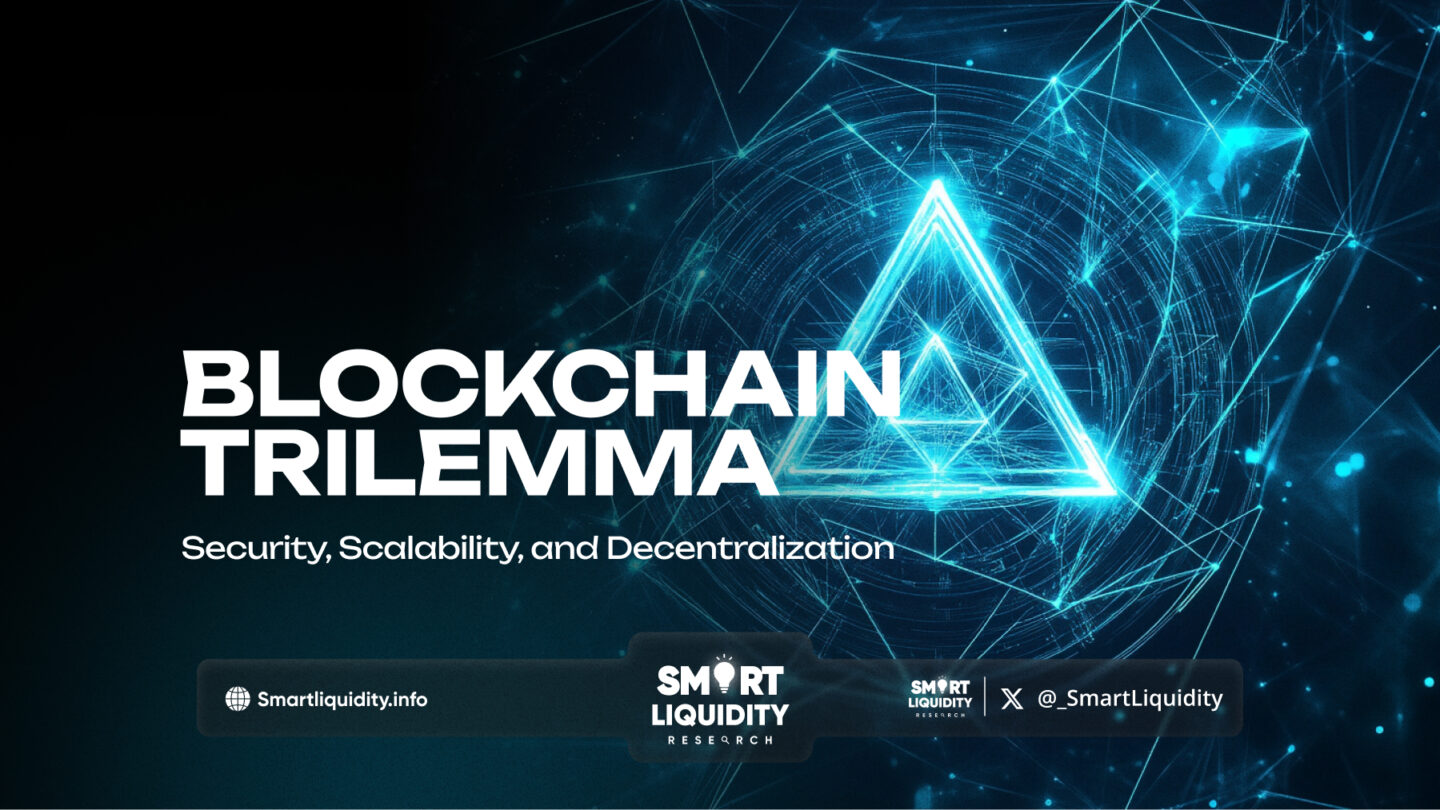Blockchain Trilemma: Security, Scalability, and Decentralization


Blockchain technology has revolutionized the digital landscape, offering unparalleled transparency, immutability, and decentralization. However, as the technology evolves, developers face a significant challenge commonly referred to as the Blockchain Trilemma. This article explores the blockchain trilemma, its implications, and potential solutions.
Understanding the Blockchain Trilemma
The blockchain trilemma posits that blockchain networks can only achieve two of the three core properties:
- Security: Ensuring the network’s resistance to attacks and unauthorized changes.
- Scalability: The network’s ability to handle a high number of transactions per second (TPS) without compromising performance.
- Decentralization: Distributing control across a broad range of nodes to avoid centralized points of failure.
While each of these properties is essential, their interdependence creates a trade-off that makes it challenging to optimize all three simultaneously. For instance, enhancing scalability might lead to reduced decentralization or security.
Security: The Foundation of Trust
Security is the cornerstone of blockchain technology. A secure blockchain protects against malicious attacks, double-spending, and unauthorized changes.
Key Security Mechanisms
- Consensus Algorithms: Proof of Work (PoW) and Proof of Stake (PoS) are two common mechanisms. PoW, used by Bitcoin, ensures security through computational effort, while PoS relies on staked assets to validate transactions.
- Cryptography: Advanced cryptographic techniques like SHA-256 ensure data integrity and confidentiality.
Despite these mechanisms, achieving robust security can limit scalability due to resource-intensive processes, such as mining in PoW.
Scalability: The Roadblock to Mass Adoption
Scalability is crucial for blockchain’s widespread adoption. Networks like Bitcoin and Ethereum have struggled with scalability, often resulting in high transaction fees and delays during peak usage periods.
Scalability Challenges
- Transaction Throughput: Bitcoin processes approximately 7 TPS, while Ethereum handles about 15–30 TPS, compared to Visa’s capacity of 24,000 TPS.
- Network Congestion: Increased usage can overload the network, leading to delays and higher fees.
Proposed Solutions for Scalability
- Layer 2 Solutions: Technologies like the Lightning Network for Bitcoin and Optimistic Rollups for Ethereum enable faster transactions by processing them off-chain.
- Sharding: Dividing the blockchain into smaller partitions (shards) to distribute transaction loads more effectively.
Decentralization: The Essence of Blockchain
Decentralization ensures that no single entity controls the network, fostering transparency and reducing the risk of censorship or corruption.
Decentralization Metrics
- Node Distribution: A high number of geographically dispersed nodes indicates greater decentralization.
- Consensus Participation: Encouraging diverse participants to validate transactions strengthens decentralization.
However, increasing decentralization can reduce efficiency, as consensus mechanisms require more time and resources to validate transactions.
The Trade-offs: Security vs. Scalability vs. Decentralization
To illustrate the trade-offs in the blockchain trilemma, the following table compares how different blockchains prioritize these properties:
| Blockchain | Security | Scalability | Decentralization |
| Bitcoin | High | Low | High |
| Ethereum (PoS) | High | Medium | High |
| Binance Smart Chain | Medium | High | Low |
| Solana | Medium | High | Medium |
Bitcoin prioritizes security and decentralization at the expense of scalability, while Solana emphasizes scalability, potentially sacrificing decentralization.
Emerging Solutions to the Blockchain Trilemma
Several innovative approaches aim to address the trilemma:
1. Layer 2 Protocols
Layer 2 solutions reduce the main blockchain’s workload by handling transactions off-chain. For example:
- Lightning Network: Enhances Bitcoin’s scalability by creating payment channels for fast and low-cost transactions.
- Rollups: Aggregate multiple transactions into a single transaction, reducing on-chain data.
2. Sharding
Sharding improves scalability by dividing the blockchain into smaller, parallel sections (shards), each capable of processing transactions independently. Ethereum 2.0 plans to implement sharding to enhance its performance.
3. Hybrid Consensus Mechanisms
Combining PoW and PoS or integrating alternative mechanisms like Delegated Proof of Stake (DPoS) can balance security, scalability, and decentralization. For instance, Polkadot’s Nominated Proof of Stake (NPoS) optimizes decentralization without compromising scalability.
4. Directed Acyclic Graphs (DAGs)
DAGs, used by platforms like IOTA, represent an alternative to traditional blockchains. By allowing parallel transaction processing, DAGs enhance scalability while maintaining decentralization.
Real-World Implications of the Blockchain Trilemma
The blockchain trilemma influences critical aspects of blockchain adoption:
- Decentralized Finance (DeFi): High transaction fees and slow processing hinder DeFi growth.
- Enterprise Adoption: Businesses require scalable and secure solutions, often prioritizing private blockchains with less decentralization.
- Regulatory Challenges: Achieving the right balance can address concerns around centralization and fraud prevention.
Conclusion
The blockchain trilemma remains a significant hurdle in the evolution of blockchain technology. While achieving optimal security, scalability, and decentralization is challenging, ongoing innovations like layer 2 protocols, sharding, and hybrid consensus mechanisms offer promising solutions. Striking the right balance will determine blockchain’s future, enabling it to fulfill its potential as a transformative force in the digital era.




